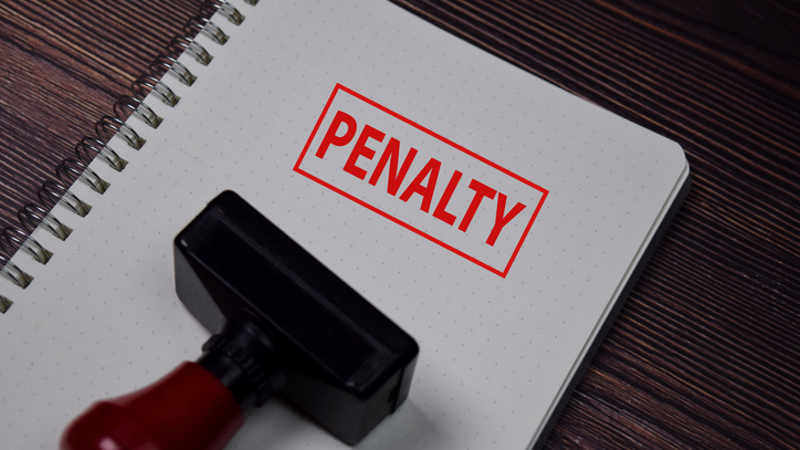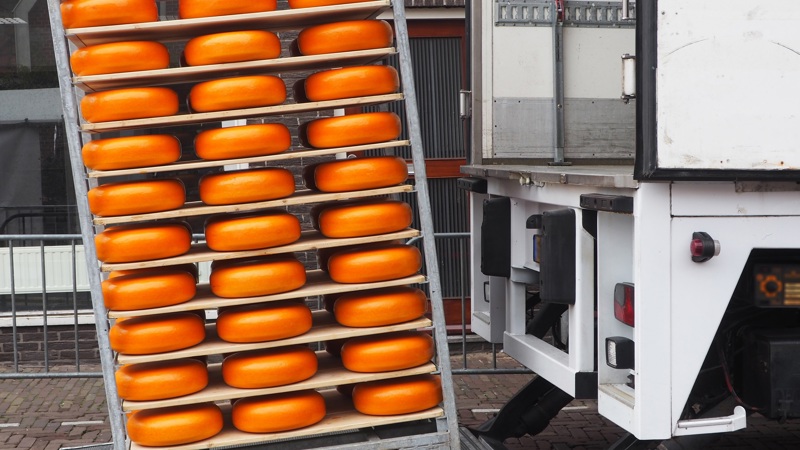The Carbon Border Adjustment Mechanism (CBAM) Regulation as of 2026: what changes lie ahead for (customs) forwarders
In December 2023, we wrote about the European Union's Carbon Border Adjustment Mechanism (’CBAM’) Regulation. [1] At the time, this Regulation had been in force for two months, since October 2023, marking the beginning of a transitional phase. This period is now reaching its end: as of 2026, the CBAM will enter into full effect. What does this mean for (customs) forwarders and how can they prepare for it?
Background
The CBAM is part of the Fit for 55 package of the European Union (’EU’). This package aims to reduce greenhouse gas emissions by at least 55% by 2030. [2]
The Regulation aims to limit the risk of carbon leakage. This occurs when companies relocate their production to countries with less ambitious decarbonisation policies than those set by the European climate targets. By doing so, producers avoid the mandatory purchase of emission allowances for the CO₂ emissions of their products under the European Emissions Trading System (‘EU ETS’). Such carbon leakage undermines the effectiveness of European CO₂ regulations. It also affects fair competition between companies in the EU and companies from third countries. One of the Regulation’s goals is therefore to protect the EU’s competitive position. In addition, the Regulation may encourage producers outside the EU to reduce their carbon emissions as well. [3]
Who is the CBAM aimed at?
To prevent carbon leakage, the Regulation applies a carbon price adjustment to certain carbon-intensive goods imported from outside the EU, such as iron, steel, and cement. The Regulation applies to importers of CBAM goods and to indirect customs representatives (forwarders) who perform CBAM-related services for (non-)EU importers.
The forwarder may act on behalf of a non-EU importer wishing to bring CBAM goods into the EU. Such an importer must use an indirect customs representative, as they cannot fulfil the CBAM obligations themselves.
An EU-based importer either fulfils the CBAM obligations independently or may choose to make use of a forwarder’s CBAM services. It is important to make clear arrangements in this regard. If the forwarder does not provide CBAM services, it is appropriate for them to warn the importer about the CBAM obligations.
In both cases, the forwarder assumes responsibility for complying with the CBAM obligations.
Obligations during the transitional phase
Until the end of this year, a transitional phase is in effect. Importers and their forwarders must report to the European Commission via the CBAM Transitional Registry within one month after each quarter. The report must include the quantity of imported CBAM goods and the amount of CO₂ emitted during the production of those goods.
Obligations as of 2026
From 2026 onwards, the CBAM will come into full effect. As of that moment, any importer wishing to import more than 50 tonnes of CBAM goods per year must apply to the competent authority for approval as a CBAM declarant. A forwarder acting as an indirect representative and performing CBAM-related services must also be approved as a CBAM declarant. The CBAM declarant will be assigned a CBAM account number.
The CBAM declarant must purchase and submit a CO₂ certificate (in a timely manner) for each ton of CO₂ emissions from the CBAM account. This is an annual CBAM declaration concerning the amount of CO₂ emitted during the production of CBAM goods imported in the previous calendar year.
If an importer attempts to bring in CBAM goods without being registered as a CBAM declarant or without using the CBAM services of a forwarder, they risk having the customs authorities hold the goods at the border. Additionally, the competent supervisory CBAM authority, in the Netherlands, the Nederlandse Emissie Autoriteit (‘NEa’), may impose a fine as a penalty for failing to comply with certain CBAM obligations.
Channeling of the risks
CBAM services are connected to the customs declaration. For both the forwarder depends on information and documentation provided by the importer. This creates risks for the forwarder. One way to mitigate these risks is by adjusting contracts with clients.
As a rule, forwarders declare the Dutch Forwarding Conditions of FENEX dated May 1, 2018 (the ’Fenex Conditions’) applicable to the services they perform for their clients. The Fenex Conditions limit the risks for the forwarder. Given the connection and similarity with customs declarations in forwarding, the Fenex Conditions can similarly offer a solution for forwarders performing CBAM services. The information obligation in Article 9 and the liability scheme (including indemnification) in Article 11 also limit the potential risks for forwarders in this case.
Article 9 of the Fenex Conditions sets out information obligations that the importer must fulfill. The importer is required to provide the forwarder with the necessary information and documentation in a timely manner. In addition, the importer is responsible for the accuracy of this information.
The Fenex Conditions also protect the forwarder against disproportionate liability arising from their work for importers. For example, Article 11 of the Fenex Conditions limits the forwarder’s liability to 10,000 SDR, which is approximately €12,250. This Article also includes an indemnification obligation for the importer against claims from third parties related to or resulting from damage for which the importer is liable towards the forwarder.
Note: There must be no fault that falls within the risk sphere of the forwarder. What if a forwarder blindly accepts information while they should have known or could have known that the information was not (completely) accurate? How far does the forwarder’s duty of inquiry extend? As a precaution, forwarders could fine-tune the Fenex clauses and expand the indemnification.
It is therefore recommended to contractually establish the applicability of the Fenex Conditions, with an explicit reference to and extension for CBAM services. This can, for example (with some adjustments), be done in the well-known FENEX formats, such as the ‘agreement/authorization to act as [in]direct representative’. These standard documents establish the authorization for the forwarder to submit (customs) declarations.
Furthermore, it is advisable, in the case of goods insurance, to consult insurers and their brokers to determine whether CBAM costs constitute an insurable financial loss. For example, consider a situation where steel imported from outside the EU is damaged or lost during road transport within the EU. It is also a question whether risks under CBAM can be covered under, for instance, a logistics liability insurance, possibly through a separate CBAM module.
Conclusion
The end of the transition phase and the full entry into force of the CBAM in 2026 are approaching. Forwarders would do well to clearly identify the risks this entails – and how to channel them in a timely manner.
[1] Regulation (EU) 2023/956 of the European Parliament and of the Council of 10 May 2023 establishing a carbon border adjustment mechanism; Marc van Maanen & Pippa Minke, "Ook (douane)expediteurs kunnen onder de Koolstofgrenscorrectie-Verordening (CBAM) vallen", December 2023, available at: vantraa.nl/nl/kennis/ook-douane-expediteurs-kunnen-onder-de-koolstofgrenscorrectie-verordening-cbam-vallen/.











